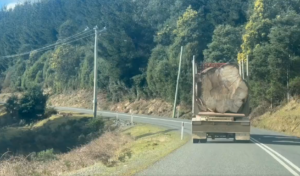The Tasmanian Government is taxing electricity users to prop up the losses that keep bleeding from Forestry Tasmania.
Indeed, the $30 million “woodchip levy” funded by Tasmanian business and households is significantly larger than the $22 million annual cost of the Renewable Energy Target that some Tasmanian businesses claim to be so disadvantaged by.
Energy Minister Matthew Groom announced last week that $30 million creamed from electricity users by TasNetworks, the Government-owned electricity transmission and distribution business, would be siphoned off and “invested” in the perennial loss-maker, Forestry Tasmania.
The decision breaks the rules of good economics, good public finance and, in driving up electricity bills, is likely to be politically unpopular.
It could be the worst government decision since Joe Hockey thought his Federal Budget deserved a cigar to celebrate.
Let’s look at the economics first.
The reason TasNetworks has at least $30 million on its balance sheet is because it has been charging Tasmanian electricity users too much.
And the reason Forestry Tasmania has clocked up $150 million in losses (before tax and other items) in five years is that it doesn’t charge enough for the logs it sells.
The idea that you would charge electricity users too much so that you can keep not charging enough for logs beggars belief.
If TasNetworks has a short-term surplus, it should return it to the Government, which, in turn, should invest it in the services or infrastructure that will maximise the jobs and productivity growth that Tasmania so badly needs.
But rather than invest in education, infrastructure or tourism marketing, the Tasmanian Government is pouring it into the black hole of Forestry Tasmania.
It would be funny if Tasmanian education standards weren’t so bad.
From a public finance point of view, the reason to set up a government-owned enterprise such as TasNetworks is to give its management the freedom and flexibility to manage an enterprise for the maximum financial return to the taxpayers who own it.
The only difference between the Treasurer instructing TasNetworks to write a $30 million cheque to Forestry Tasmania and writing the cheque himself is the loss of transparency.
The cost to the State Budget is the same, but the opportunity for the Parliament to debate the issue is non-existent.
Then there is the politics. It might be a stroke of genius to gouge electricity users to prop up Forestry Tasmania, but I doubt it.
Political animosity around the carbon price and the Renewable Energy Target led consumers to substitute complaining about power prices for their old favourite of complaining about petrol prices.
Once it might have been a safe bet to assume electricity consumers wouldn’t notice or care about a woodchip levy buried so deep in their electricity bill they couldn’t see it. But these days it’s a risk.
But leaving doublespeak and politics aside, the biggest problem revealed by this bid to conceal the huge subsidies to Forestry Tasmania is evidence this Government, like the last, has no real plan to tackle rising unemployment and declining labour productivity in the Tasmanian economy.
Economist Richard Denniss is Executive Director of The Australia Institute
Related documents
Between the Lines Newsletter
The biggest stories and the best analysis from the team at the Australia Institute, delivered to your inbox every fortnight.
You might also like
Corporate Profits Must Take Hit to Save Workers
Historically high corporate profits must take a hit if workers are to claw back real wage losses from the inflationary crisis, according to new research from the Australia Institute’s Centre for Future Work.
C’mon Albo! Stop Native Forest Logging
Prime Minister Anthony Albanese can stop the logging of Australia’s native forests, just as PM Malcolm Fraser stopped whaling in 1978.
The carbon con killing koalas
The NSW Labor Government took office promising to create a vast koala sanctuary on the state’s mid-north coast – the Great Koala National Park. Despite the threat of koala extinction in the state, more than a year later the Great Koala National Park is yet to be established.


